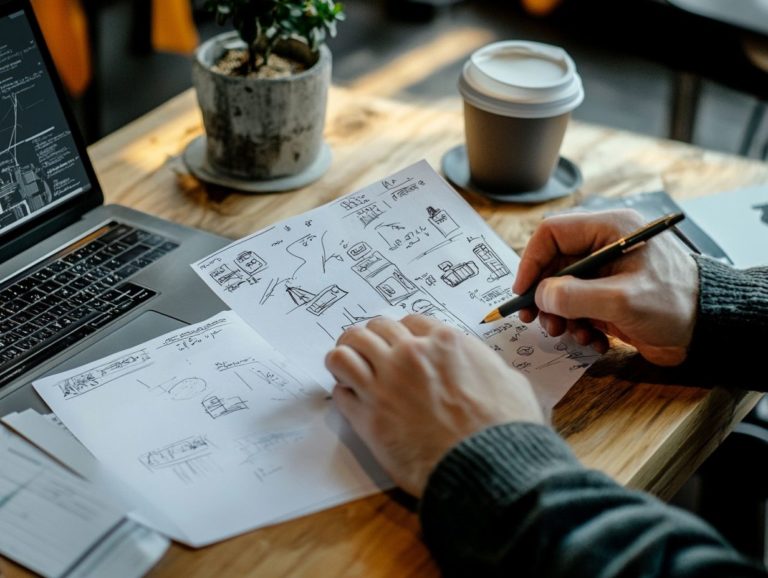What You Need to Know About Patent Drawings
When securing your intellectual property, patent drawings are vital. They clarify your invention and convey its unique features.
This article covers utility, design, and plant patent drawings. It highlights their importance and guidelines for creating them.
Understanding patent drawings is crucial whether you’re an experienced inventor or just starting out.
Contents
- Key Takeaways:
- Overview of Patent Drawings
- Types of Patent Drawings
- Why Patent Drawings are Important
- Guidelines for Creating Patent Drawings
- Common Mistakes to Avoid
- Working with a Patent Illustrator
- Frequently Asked Questions
- 1. What are patent drawings and why are they important?
- 2. Do I need to include patent drawings in my patent application?
- 3. What are the requirements for patent drawings?
- 4. Can I create my own patent drawings or do I need a professional?
- 5. Can I make changes to my patent drawings after submission?
- 6. Are there any special considerations for design patent drawings?
Key Takeaways:
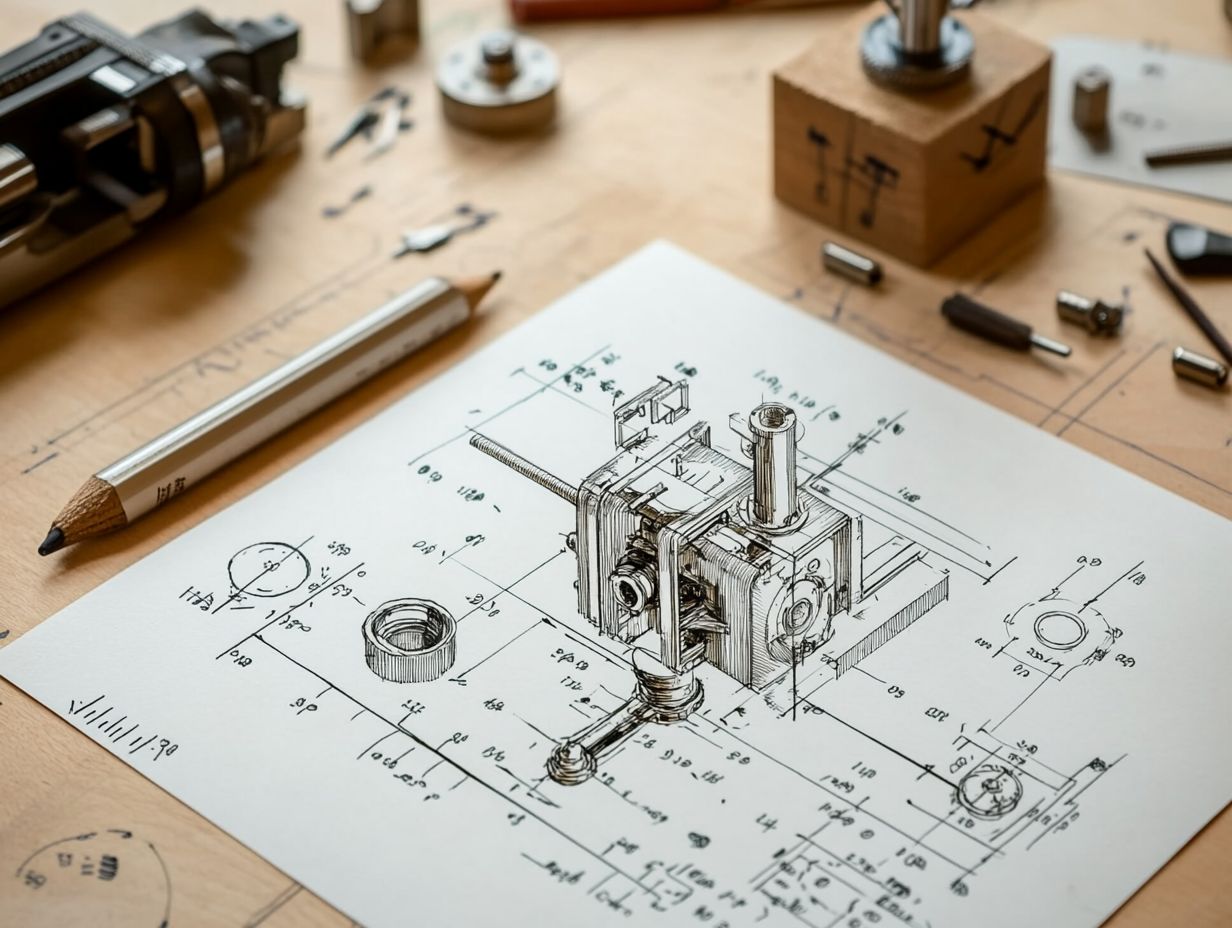
Patent drawings are visual representations of an invention and are essential in the patent application process. There are different types of patent drawings: utility, design, and plant drawings, each with specific guidelines. Working with a professional patent illustrator ensures accuracy and quality, leading to a stronger patent application.
Overview of Patent Drawings
Patent drawings are crucial in your patent application journey. They serve as visual representations that help others understand your invention’s design and functionality.
These drawings require meticulous attention to detail. They must adhere to specific guidelines, such as PCT rules and USPTO standards, to effectively capture your invention’s essence.
Well-executed patent drawings elevate the quality of your application. They safeguard the intellectual property of inventors and organizations, significantly bolstering their patent portfolios.
What are Patent Drawings?
Patent drawings are essential technical illustrations that articulate your invention. They adhere to specific requirements to ensure clarity and precision.
These illustrations showcase the unique features and functionalities of your invention. They simplify complex concepts into easily digestible visuals.
Characterized by detailed accuracy and standardized formats, these drawings must represent every aspect of your claimed invention. Clarity is paramount in presenting your innovation.
Patent attorneys and professional illustrators collaborate to ensure compliance with regulatory standards. Their expertise enhances the clarity of your submission.
This collaboration not only ensures compliance but also strengthens your patent’s position during examination. It gives you a competitive edge in the application process.
Types of Patent Drawings
Patent drawings can be classified into several categories. The most prevalent types are utility patents, design patents, and plant drawings.
Each type serves a unique purpose in capturing your invention’s innovative features. Every aspect must be meticulously documented to ensure protection.
Utility, Design, and Plant Drawings
Utility drawings illustrate the functional aspects of your invention. Design drawings emphasize the aesthetic features.
If you re working with new plant varieties, plant drawings come into play. Each type requires adherence to specific patent drawing guidelines.
These illustrations convey your invention s purpose and mechanics visually. They must comply with the intricate requirements of patent offices.
Utility drawings need to prominently display the arrangement of elements. Clarity and detail are essential in conveying how your invention operates.
Design drawings capture the visual essence of your work. They showcase unique shapes and surface ornamentation, key in attracting interest and securing protection.
For plant drawings, accurately depicting characteristics like color and form is crucial. Highlighting features helps identify and classify new plant varieties.
Every drawing style must perform its role perfectly to protect your innovation. Understanding these types is vital to your success don’t risk your invention being misunderstood!
Why Patent Drawings are Important
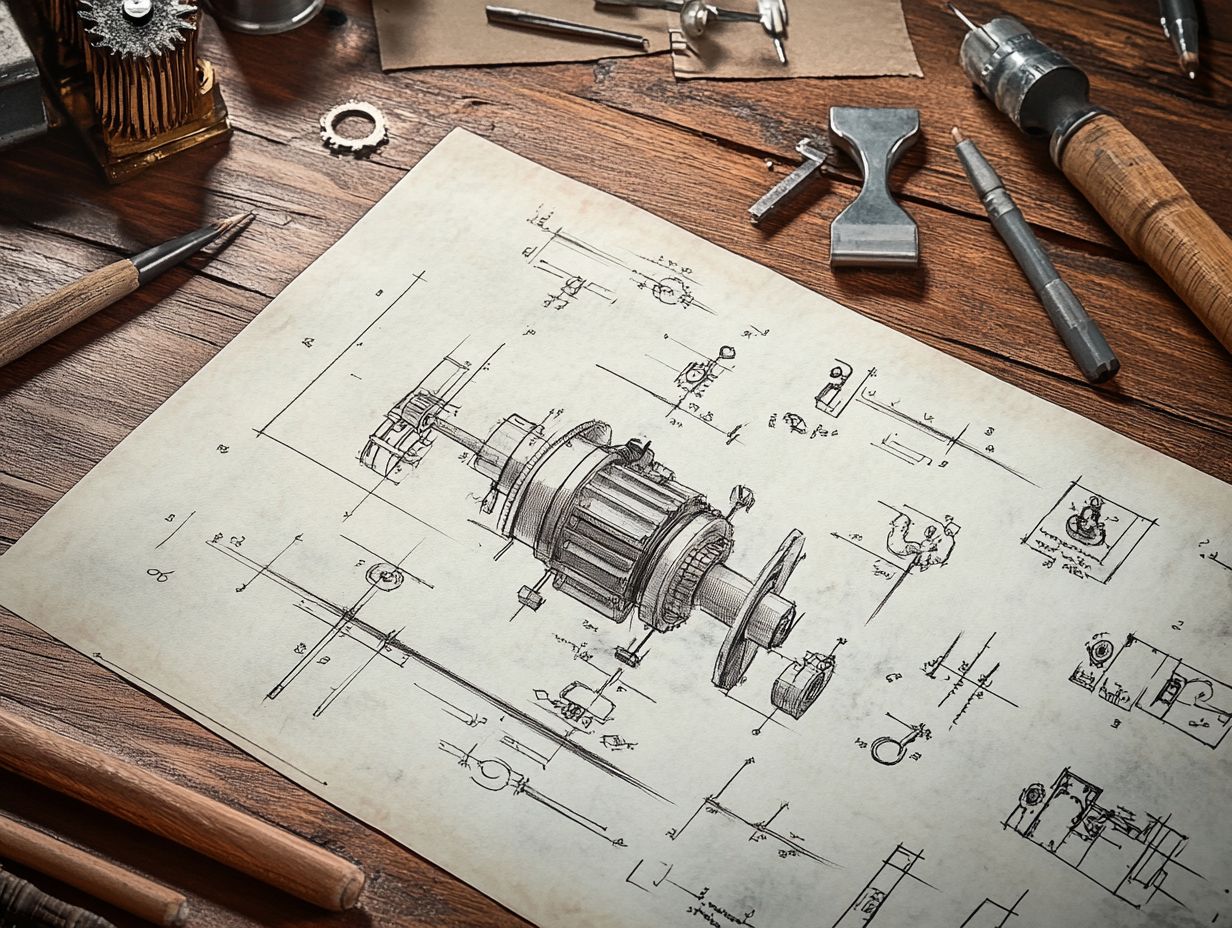
Patent drawings play an essential role in the patent application process. They act as visual aids that illuminate your invention claims and provide clarity on the technical aspects.
These visuals enhance understanding and ensure you meet all filing requirements with precision.
Role in the Patent Application Process
In the patent application process, drawings provide a technical perspective that complements the written description. These visuals ensure that your patent claims are fully supported and easily understood.
They clarify complex concepts and help patent examiners visualize your invention. This significantly reduces the potential for misunderstandings.
Detailed and accurate patent drawings can greatly influence the likelihood of approval from agencies like the USPTO and the International Bureau. When these offices review submissions, well-executed visuals enhance the overall presentation of your application.
This can sway decisions regarding novelty and non-obviousness. Clear and precise drawings are vital to your success!
Guidelines for Creating Patent Drawings
When creating patent drawings, adhere to established drawing requirements. Use black ink, maintain proper margins, number your sheets, and format to A4 size.
Following these guidelines ensures compliance and a polished, professional presentation.
Requirements and Best Practices
To create effective patent drawings, follow specific requirements and best practices that guarantee clarity, accuracy, and compliance with patent office standards.
These guidelines include appropriate annotation styles that clearly label parts and features, allowing for efficient communication of your invention s functionality.
Consistently utilizing reference signs throughout your drawings establishes direct connections between annotated components and descriptive texts, significantly enhancing understanding.
Maintaining proportionality in your elements helps viewers accurately grasp the dimensions and relationships between components. Careful attention to detail greatly enhances the overall quality of your patent applications.
This reduces the likelihood of misinterpretation and facilitates smoother examination processes by patent offices.
Common Mistakes to Avoid
Avoiding common mistakes in patent drawings is crucial for maintaining accuracy and quality. Errors can undermine the integrity of your patent application and complicate the approval process, potentially delaying your innovation’s journey to protection.
Tips for Ensuring Accuracy and Quality
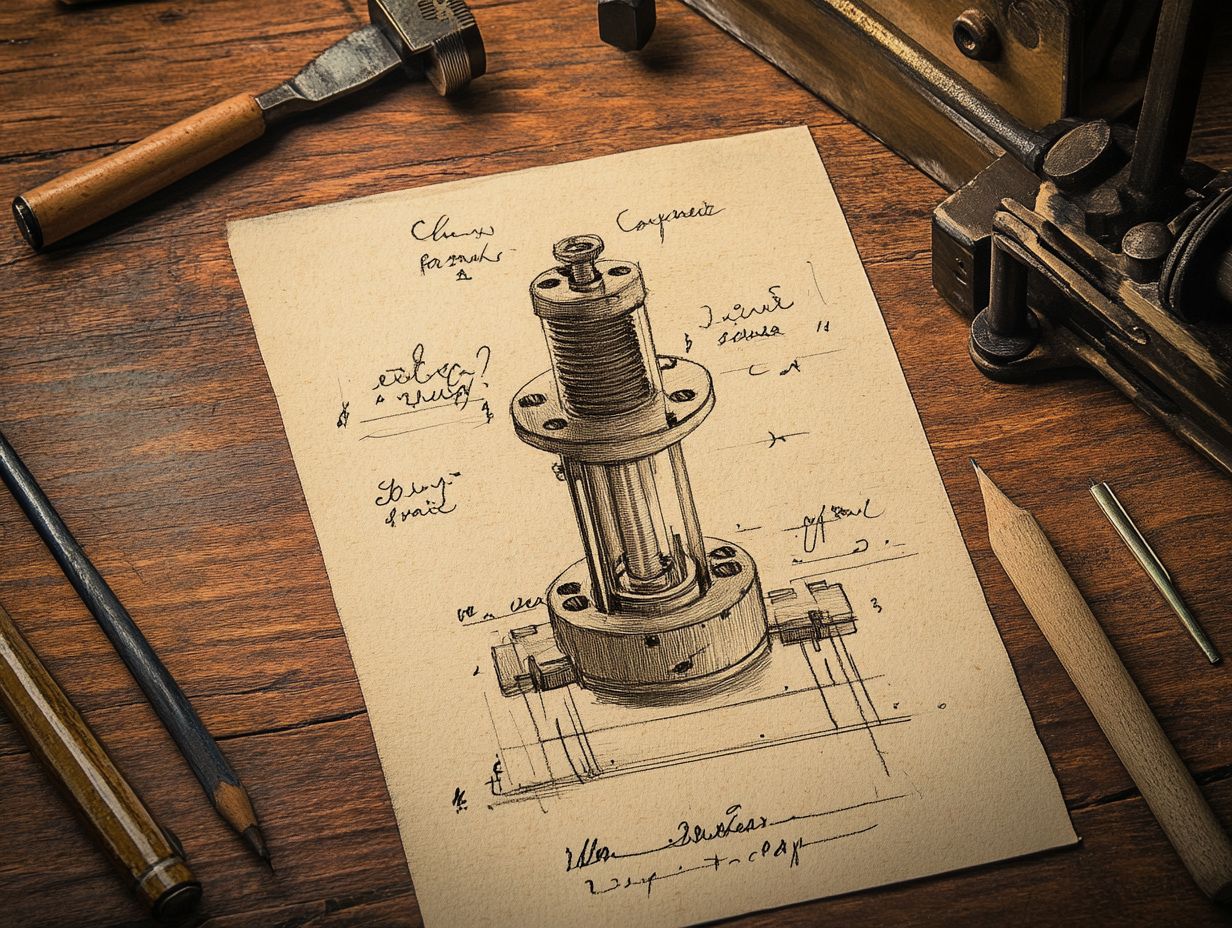
Ensuring accuracy and quality in your patent drawings requires careful attention to detail and strict adherence to specified guidelines. When necessary, enlist the help of professional drafting services to reach the highest standard.
By tapping into the expertise of seasoned patent illustrators, you can significantly elevate the quality of your drawings. Every element will be depicted with precision.
Implement a thorough review process during drafting to catch errors and inconsistencies early on. This might include multiple rounds of checks, sharing drafts with colleagues for constructive feedback, and consulting the relevant patent guidelines.
Adopting these strategies not only enhances the overall quality of your work but also boosts the chances of a successful patent application.
Working with a Patent Illustrator
Collaborating with a patent illustrator offers substantial benefits, including access to specialized drafting services that elevate the quality and effectiveness of your patent drawings.
Benefits and Considerations
Hiring a patent illustrator offers benefits that go far beyond visual enhancements. It ensures that your technical drawings are crafted to an exceptional standard, greatly influencing the success of your patent application.
A skilled patent illustrator brings a lot of experience, translating complex concepts into clear, precise visuals that meet strict industry standards. This expertise elevates the visual appeal and deepens the understanding of your invention.
Well-executed illustrations can prevent misunderstandings or disputes during the patent review process. They effectively convey details that words alone may fail to capture. Professional output guarantees compliance with specific requirements set by patent offices, protecting against potential rejections and speeding up your application journey.
In essence, employing an illustrator is a strategic investment in the future of your invention.
Frequently Asked Questions
1. What are patent drawings and why are they important?
Patent drawings are detailed illustrations or visual representations of an invention or design submitted as part of a patent application. They are essential because they help explain the concept and features of the invention, making it easier for patent examiners to understand and evaluate the application.
2. Do I need to include patent drawings in my patent application?
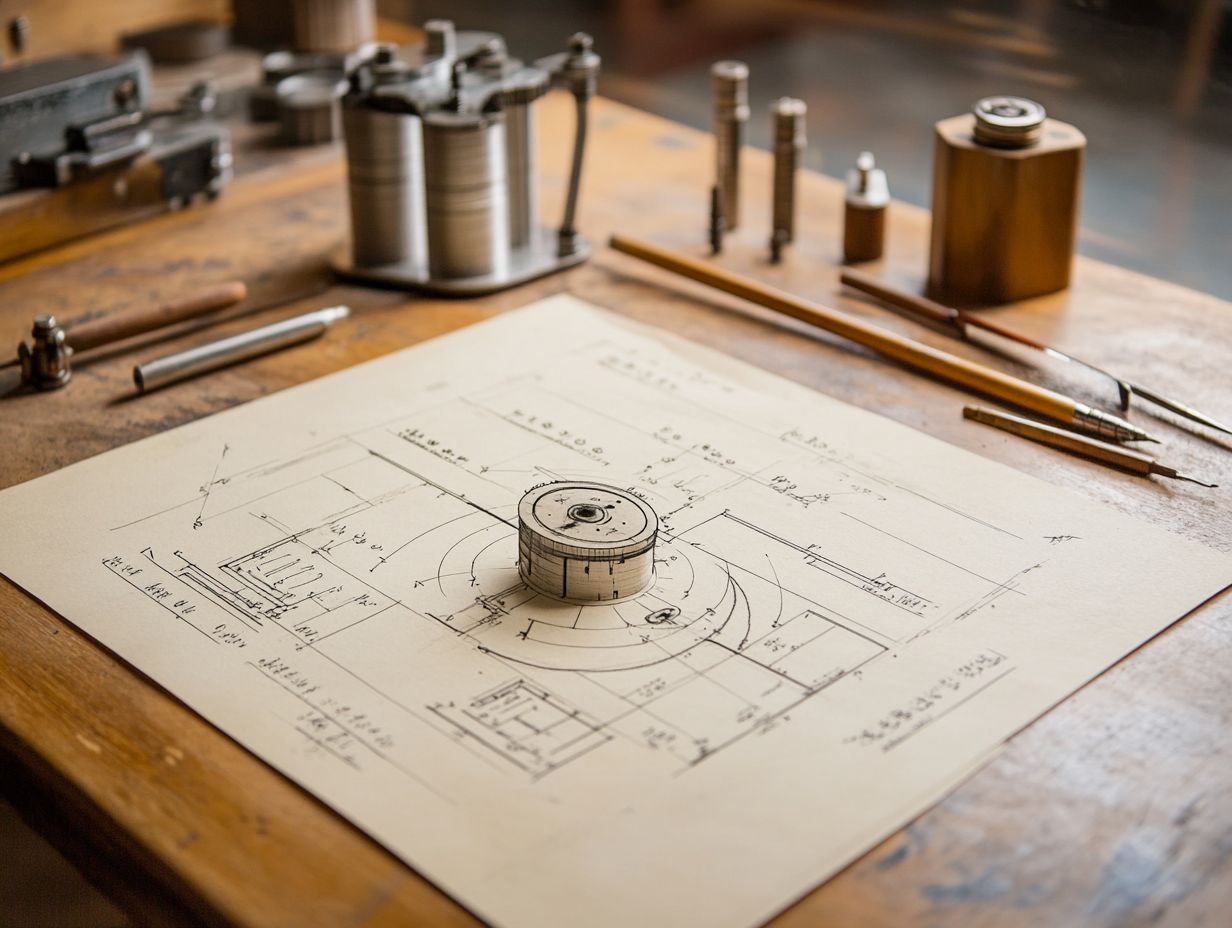
Yes, you should include patent drawings in your application. While not all inventions require drawings, they are helpful in explaining and supporting your claims, especially for complex or technical inventions.
3. What are the requirements for patent drawings?
The drawings must be clear, detailed, and reproducible. They should be in black and white, with no shading or color, and must not contain any text, labels, or symbols. The scale and proportions of the drawings should also be consistent and precise.
4. Can I create my own patent drawings or do I need a professional?
You can create your own patent drawings, but it s recommended to hire a professional. Patent drawings need to meet specific requirements and standards, and a professional with experience in patent illustrations will ensure that your drawings are accurate and comply with the guidelines.
5. Can I make changes to my patent drawings after submission?
No, once your patent application has been submitted, you cannot make any changes to the drawings. It is crucial to carefully review and make any necessary corrections or revisions before submitting your application to avoid delays or rejection.
6. Are there any special considerations for design patent drawings?
Yes, design patent drawings should include all perspectives and views of your design, such as front, back, top, bottom, and side views. The drawings should accurately depict the design as it will be manufactured and used, and should not include any functional or structural details.




